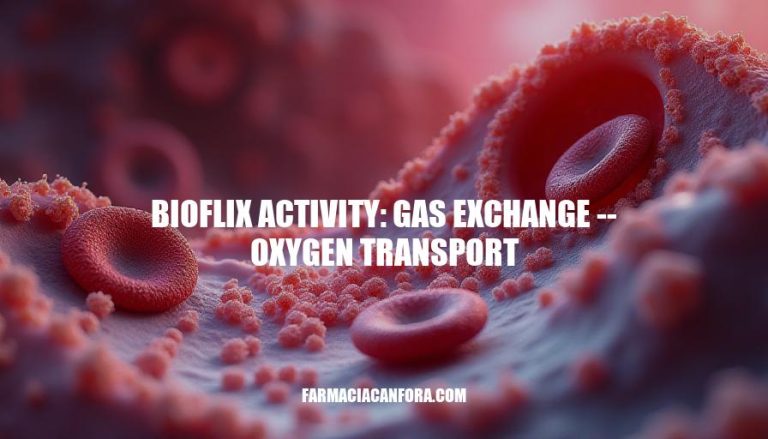


The human body needs oxygen to work properly. It gets this oxygen from the air we breathe and sends it to all our cells. At the same time, it removes a waste product called carbon dioxide.
This process is important for keeping our cells healthy and working well. The lungs help by taking in oxygen from the air and sending it into our bloodstream. Then, the circulatory system carries this oxygen-rich blood to all parts of our body.
Oxygen enters the bloodstream through the alveoli in the lungs, which are tiny air sacs surrounded by a network of capillaries. When you inhale, air fills these alveoli. The walls of the alveoli are thin and permeable, allowing oxygen molecules to diffuse through them and into the surrounding capillaries.
This diffusion occurs due to the concentration gradient: the oxygen concentration in the alveoli is higher than in the blood.
Once in the capillaries, oxygen binds to hemoglobin, a protein found in red blood cells. Hemoglobin is composed of four subunits, each containing an iron atom that can bind to one oxygen molecule. The binding of oxygen to hemoglobin is a reversible reaction, meaning that hemoglobin can pick up oxygen in the lungs and release it in the tissues.
The transport of oxygen is primarily facilitated by the circulatory system.
Oxygen-rich blood from the lungs is carried by the pulmonary veins to the left side of the heart, which then pumps it out through the systemic arteries. As blood travels through the body, the oxygen bound to hemoglobin is released in tissues where it is needed. This release is influenced by several factors, including the partial pressure of oxygen (PO2), the partial pressure of carbon dioxide (PCO2), pH levels (the Bohr effect), and temperature.
Hemoglobin is crucial in this process because it increases the oxygen-carrying capacity of blood.
Without hemoglobin, the amount of oxygen dissolved in plasma would be insufficient to meet the body’s needs. Hemoglobin can carry up to four oxygen molecules at a time, which allows it to efficiently transport large quantities of oxygen from the lungs to tissues.
Factors that affect oxygen binding and release include:
Partial pressure of oxygen (PO2): Higher PO2 in the lungs promotes oxygen binding to hemoglobin, while lower PO2 in tissues facilitates oxygen release.
Partial pressure of carbon dioxide (PCO2): Elevated PCO2 levels in tissues promote oxygen release from hemoglobin.
pH levels: Lower pH (more acidic conditions) in tissues enhances oxygen release, a phenomenon known as the Bohr effect.
Temperature: Higher temperatures in active tissues encourage oxygen release from hemoglobin.
This dynamic process ensures that oxygen is delivered to tissues in accordance with their metabolic demands, enabling efficient cellular respiration and energy production.
The human body relies on oxygen to function properly, which is obtained from the air we breathe and transported to all cells through the circulatory system.
The lungs play a crucial role by taking in oxygen and sending it into the bloodstream, where it binds to hemoglobin in red blood cells. Hemoglobin increases the oxygen-carrying capacity of blood, allowing for efficient transport of large quantities of oxygen from the lungs to tissues.
The process of gas exchange is essential for maintaining healthy cells and overall bodily functions. Oxygen enters the bloodstream through the alveoli in the lungs, where it diffuses into capillaries due to a concentration gradient. Once bound to hemoglobin, oxygen is transported to tissues, where it is released based on factors such as partial pressure of oxygen, carbon dioxide levels, pH levels, and temperature.
Understanding this biological process is vital for appreciating the intricate mechanisms that sustain life. The efficient delivery of oxygen to cells enables cellular respiration and energy production, highlighting the importance of maintaining healthy respiratory and circulatory systems.
For readers interested in learning more about oxygen transport and gas exchange, further reading on topics such as hemoglobin structure and function, the Bohr effect, and the regulation of breathing would be beneficial. Additionally, exploring the impact of environmental factors, such as altitude or air quality, on oxygen transport could provide valuable insights into the complexities of this biological process.